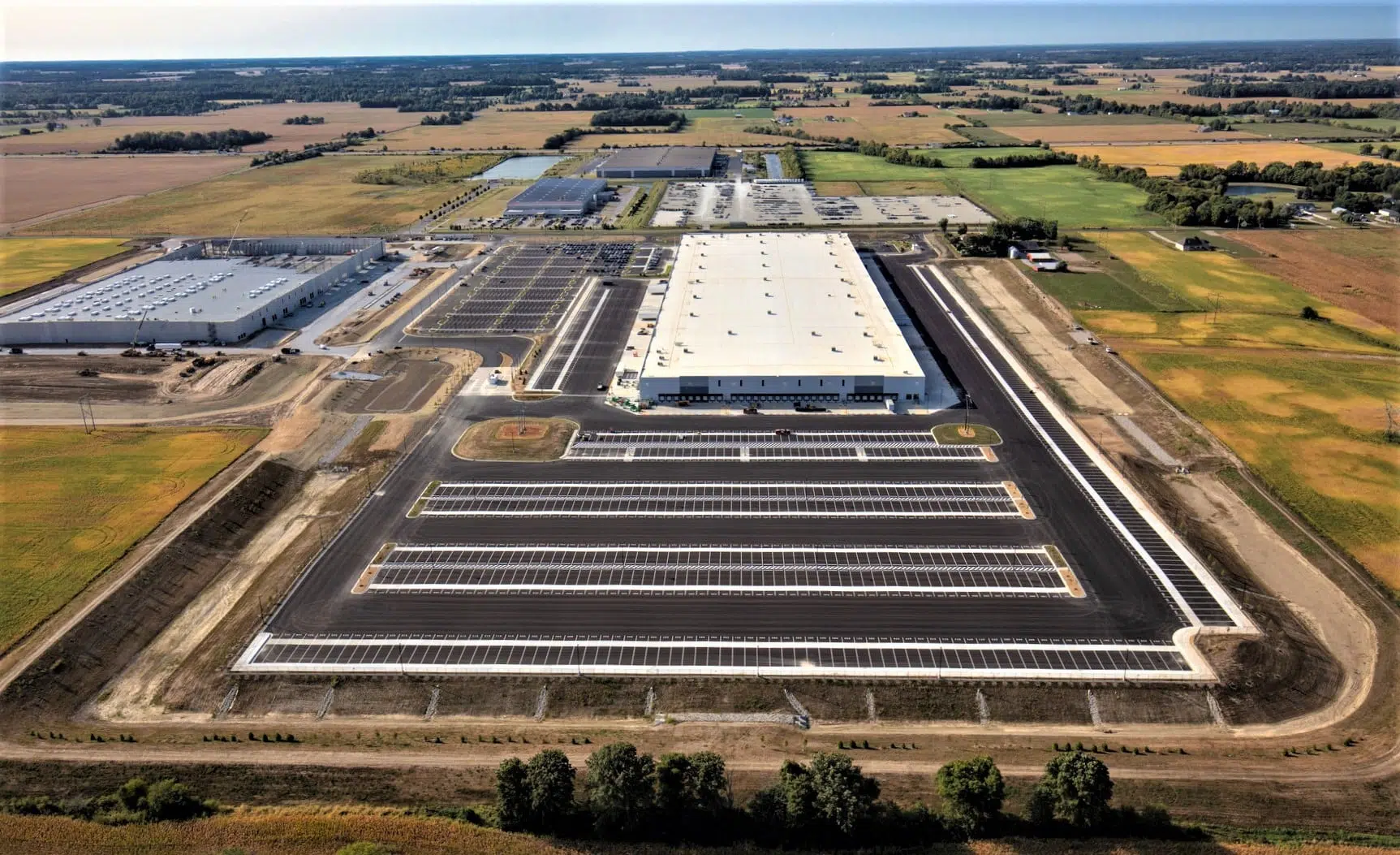- March 31, 2021
- Perspectives, Trending Topics
8 Tips for Developing Last-Mile Distribution Centers


Katy Daneker,
PE
E-commerce Practice Lead

Dave France, PE
Industrial Practice Lead

Will Matzek, PE, CPESC, LEED AP
E-commerce Practice Lead
The growth of online retail was well underway before the pandemic, but with increased health and safety concerns, consumer preferences have shifted even more towards pick-up options and home delivery. As a result, consumers have come to expect and rely on the speedy delivery of online goods, which is largely dependent on the last mile of the supply chain.
As the demand for faster delivery has grown, so too has the demand for last-mile distribution centers. Consequently, industrial properties located near end users have become increasingly difficult to find and developers, retailers, and engineers have had to come up with creative solutions to meet last-mile delivery needs and overcome challenges.
Even once developers find a property that meets their requirements, there are still more obstacles that can delay the site’s development. From zoning codes that don’t anticipate the nuances of last-mile distribution centers to site constraints and community opposition, here are eight considerations to help quickly develop and design a successful last-mile site.
- Unlock tight sites, accelerate approvals, and optimize operations with an informed and creative approach to traffic and parking.
Last-mile distribution centers have access, circulation, parking, and operational needs which are very different from those of other industrial and warehouse distribution facilities. By partitioning access, circulation, and parking of different vehicle types, both operations and vehicular and pedestrian safety will be improved. Additional enhancements can be provided by a traffic consultant who understands both the end users’ and local agencies’ priorities. These experts can help mitigate on- and off-site congestion to keep operations flowing during peak times. Consultants experienced in last-mile distribution centers also can design creative parking and access configurations that preserve the package handling layout and prioritize direct access to the public right-of-way for delivery vehicles.
- Streamline approvals and reduce construction costs with early constraint integration and operational layout.
End users need to know what development constraints exist on the site they’ve selected. As early as possible, modify the site layout to account for anticipated site constraints such as access, drainage/floodplains, wetlands, buffers/setbacks, existing utility constraints, easements, and grading. Because of the tremendous schedule pressure on last-mile projects, confirming that the site can accommodate the facility’s unique operational requirements up front can save time and money in the long run.
- Reduce entitlement risk and development costs with strategic, proactive zoning interpretations.
Develop your own code interpretation and make sure you have a plan before visiting with local officials to start the conversation on the right foot. Industrial/distribution zones are best but commercial zones can work too. Many codes do anticipate package delivery—USPS, FedEx, and UPS are all last-mile facilities. Look to see where these facilities are currently located and how they are zoned. Lastly, when facing parking lot restrictions or design requirements, label delivery vehicle areas as vehicle storage, fleet parking, or loading area, not as parking lots.
- Educate approval agency staff on the end user’s unique operations to decrease concerns and accelerate approvals.
Local agency staff may not be familiar with the unique characteristics of a last-mile distribution center. For instance, they could be unaware that peak last-mile trip generation may be during non-rush-hour periods. Provide clear explanations and exhibits to agency staff, officials, and the public (within confidentiality constraints).
- Speed up approvals by informing the community of the benefits of last-mile distribution centers.
Optimizing delivery networks by adding last-mile facilities means shorter delivery routes, reduced traffic congestion and vehicle emissions, and faster delivery to homes and businesses. The anticipated use of electric delivery vehicles will further benefit communities. Communicating these coming enhancements to the extent possible will keep decision-makers in the community engaged in pushing the process forward.
- Avoid significant electric vehicle cost increases and disruptions with early planning and EV readiness.
Most last-mile operators are planning for some level of delivery vehicle fleet electrification. Install on-site infrastructure, including conduits, up front to allow for future vehicle charging and plan space for EV-related chargers and transformers. Site selection and due diligence should include review of the surrounding electric grid as off-site upgrade costs can be significant.
- Set your operations up for success with scalable program and project management.
Last-mile facilities are rarely planned as single sites. Last-mile needs typically result in a distributed, multi-site program. Consider the bigger picture before you begin the planning process. When refining an approach and assembling a team, consider this increased scale. Prioritize process consistency and reduce variables by collaborating with firms that have team member capacity and applicable experience.
- Leverage local agency relationships for faster, smoother, cost-effective last-mile development projects.
These unique projects benefit from knowledge of jurisdictional requirements and trust built from prior projects. Engage consultants with existing agency experience and relationships. Consultants who know and partner with both the agency and the end user can better ensure the project will be completed successfully.
Talk with a local last-mile expert.
Have a question? Get in touch with a Kimley-Horn last-mile distribution center expert.
About the Authors

Katy Daneker, PE
Katy co-leads our e-commerce practice and has served as project manager on more than 150 e-commerce projects. She is a National Program Manager for specialty parking projects at these facilities. She has more than fourteen years of experience in both traffic and private land development projects. She has a background in traffic analysis, site planning of commercial, business, and industrial developments, sanitary sewer design, and grading and drainage design for site and roadway improvements. Katy is well-versed in interpretation and application in municipal code requirements, adding significant value to clients by guiding them through processes in the most effective way.

Dave France, PE
Dave is an Industrial Practice Lead with experience in a broad range of civil engineering projects. Throughout Dave’s career, he has partnered with local economic development agencies, brokers, developers, and owners with a focus on commercial and industrial development. His industrial projects have included high-profile developments for clients such as the U.S. Navy Exchange (NEXCOM), Ace Hardware, BMW, and more. Dave’s understanding of industrial developments allows him to manage multidisciplinary teams that have an intimate understanding of the project environment.

Will Matzek, PE, CPESC, LEED AP
Will co-leads our e-commerce practice and has served as project manager on hundreds of e-commerce projects. Will focuses on land development projects, working on mostly mid- to large-scale data centers, industrial, retail, multifamily, and mixed-use developments. His principal areas of practice include entitlement and permit approvals, site plan design, as well as street and utility design, including layout and geometrics, dry utilities, water, sanitary sewer, storm sewer, stormwater routing and treatment, stormwater pollution prevention plans (SWPPP), and specifications. He also serves national clients in multiple locations with the planning, design, approval, and construction of large and small land development projects.
